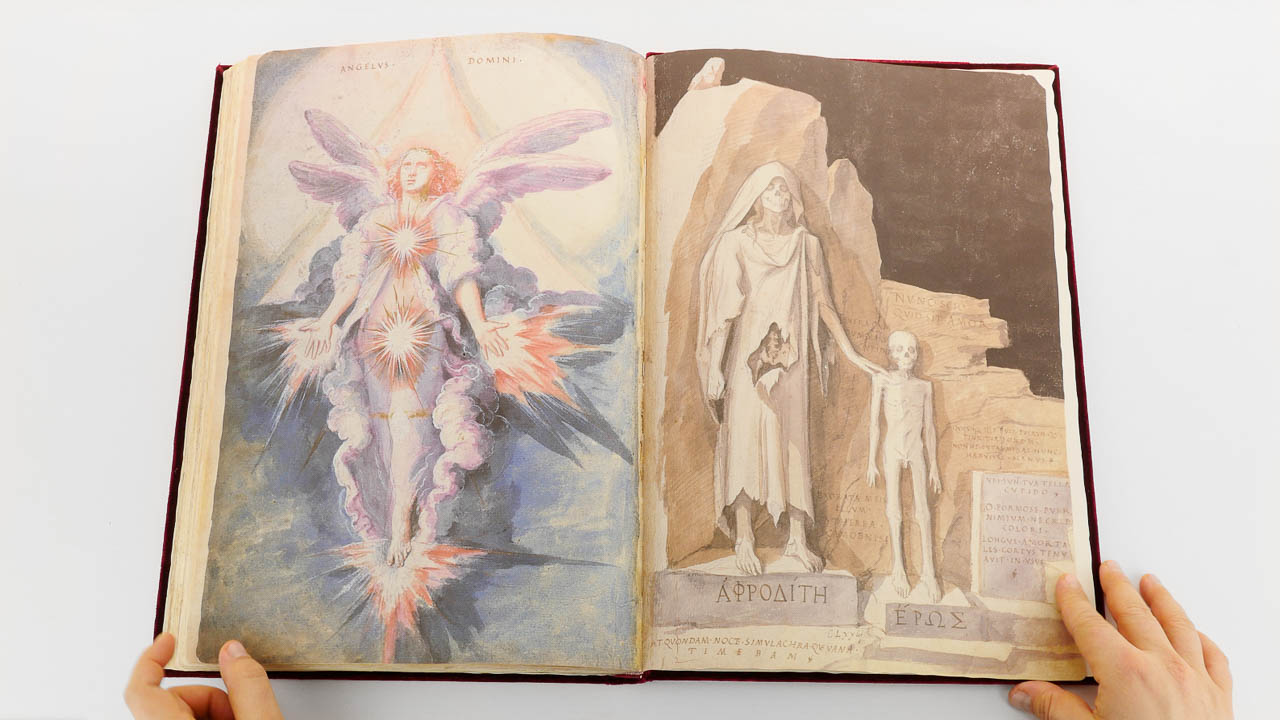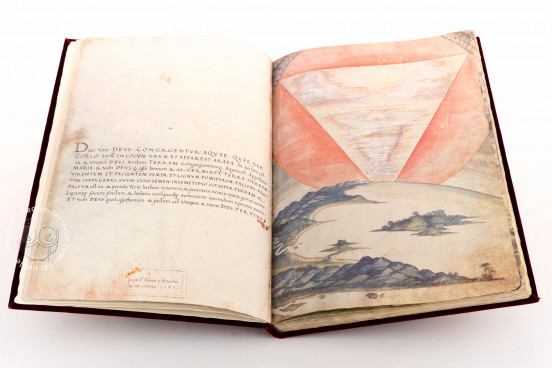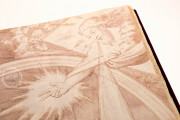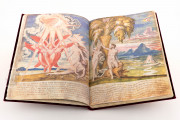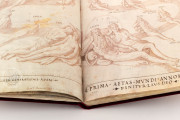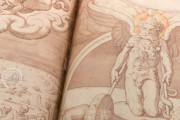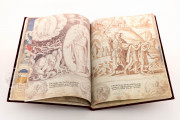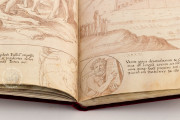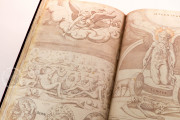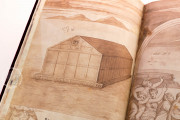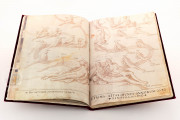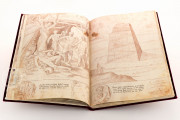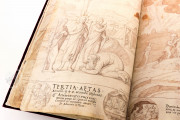De Aetatibus Mundi Imagines is the chronicle in images of the ages of the world, although this is the main reason to present, with subtle irony, our temporary reality. Eternity is the only enemy able to beat time. Life is transitory, a world full of grey tones as time passes. In contrast, eternity, shown as a life in full colour, is a perfect world.
The techniques employed in the drawings are gouaches and washes. It is a book full of overpowering images, loaded with allegorical and historical references, with a strength and vigour that make it hard to believe that they were made in the16th century because of the validity and modernity of the artistic vision of Francisco de Holanda.
Sylvie Deswarte states in her study: “This Ordo Imaginum clearly shows that these images are not mere illustrations from the Vulgate or the Lives of the Saints as one may believe at first sight. They contain a much more complex theological and historical meaning, as shown in the references and quotes of different sources, such as Eusebius, the Septuagint and the Hebrews.”…
“Like the title says, De Aetatibus Mundi Imagines, narrates with pictures the history of the world in six Ages and its redemption, following closely the biblical account, placed by him carefully within the world history chronology.” … “His images are not, as could be expected, mere illustrations from the Bible.” … “Holanda is faithful to the biblical text, reading it over and over. He also resorts to the Fathers of the Church and Christian poets from the late Antiquity such as Prudentius. In parallel, he seems to have constantly in front of his eyes the Nuremberg Chronicle and the synchronic tables from the Chronologia by Nicolau Coelho do Amaral in order to merge the biblical text with pagan history”.
Francisco de Holanda was sent to Italy, by an explicit order of the king of Portugal, to learn the new art: the Renaissance. As luck would have it, Michelangelo was the artist who taught him for two years and turned him into one of the most outstanding Renaissance artists from the Iberian Peninsula when he returned in 1540. Michelangelo’s influence is obvious; the first thing Francisco de Holanda painted was the creation of the world, inspired in what he could examine in the Sistine Chapel still unfinished.
Binding description
Binding
Crimson natural silk velvet.
We have 1 facsimile edition of the manuscript "De Aetatibus Mundi Imagines": De Aetatibus Mundi Imagines facsimile edition, published by BiblioGemma, 2007
Request Info / Price
